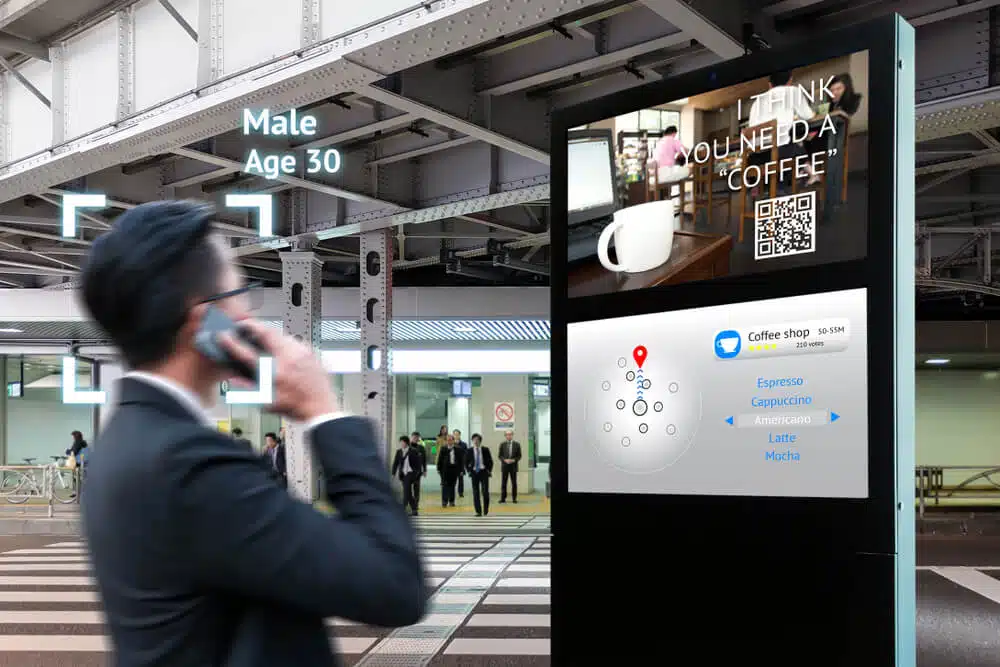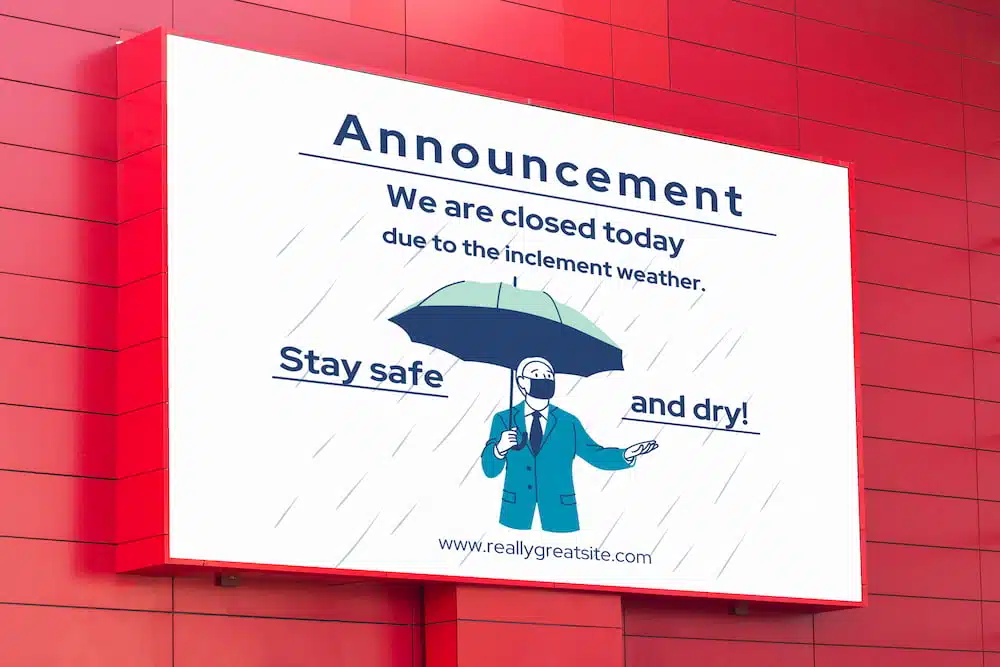
Improving Warehouse Productivity with Warehouse Digital Signage
Discover New Possibilities! Click Here to Download Your Free eBook Today and Unlock Expert Insights! Communication is critical in a …

Discover New Possibilities! Click Here to Download Your Free eBook Today and Unlock Expert Insights!
In today’s fast-paced business world, the importance of signage cannot be overstated. Signage is a vital communication tool for businesses that helps to attract customers and convey important messages.
However, with the rapid advancement of technology, businesses now have a choice between traditional and digital signage. While both types of signage have their pros and cons, digital signage has emerged as the more effective option for businesses.
In this article, we will explore the comparison of digital signage vs traditional signage and examine why digital signage proves to be more effective than traditional signage for businesses.

Digital signage refers to the use of electronic displays such as LCD, LED, or projection to display images, videos, or text. These displays can be controlled by software and can be placed in various locations to convey information or advertising messages.
Digital signage has some advantages such as:
Examples of digital signage include electronic menu boards in fast food restaurants, digital billboards on highways, and video walls in retail stores. These displays can be controlled by software and can display images, videos, or text, and can be customized to target specific audiences or locations.

Traditional signage refers to physical signs made of materials such as wood, metal, plastic, or fabric placed in various locations to convey information or advertising messages.
Traditional signage has some advantages such as:
Examples of traditional signage include billboards, banners, posters, and signs that are placed on storefronts or along roadsides. These types of signage can be made of materials such as wood, metal, plastic, or fabric and are often printed with letters, graphics, or images.
Digital signage offers several advantages that make it a more effective medium for businesses compared to traditional signage. Here are some reasons why:

Digital signage can attract more attention and engagement from customers due to its dynamic and interactive content. Video content, animation, and sound can all be used to create a more engaging and memorable experience for customers.
Digital signage can be customized to target specific audiences, locations, and times of the day, allowing businesses to deliver more personalized and relevant messaging. For example, a retail store can display product recommendations based on a customer’s previous purchases or browsing history.
Digital signage allows for more flexibility in messaging as content can be changed easily and frequently. Businesses can also leverage real-time data to display relevant information, such as weather updates or news headlines.
While the initial cost of setting up digital signage can be high, the long-term cost-effectiveness is often better compared to traditional signage. Digital signage eliminates the need for printing and distributing physical materials, saving businesses money on production and distribution costs.

Digital signage can also provide businesses with valuable data on customer behavior, such as how long customers engage with specific content or which messages are most effective. This data can be used to optimize messaging and improve overall business strategies.
Implementing digital signage can seem daunting, but with the right planning and execution, it can be a highly effective marketing tool. Here are some steps to follow:
Start by defining your goals and objectives for your digital signage campaign. What do you want to achieve? Do you want to increase sales, improve customer engagement, or enhance brand awareness? Clearly defining your goals and objectives will help you create a more effective digital signage campaign.

Select the right hardware and software for your digital signage campaign. Consider factors such as screen size, resolution, and connectivity options. Choose a user-friendly software that has the features you need, such as remote content management and scheduling capabilities.
Create high-quality content that is visually appealing, engaging, and relevant to your target audience. Use a mix of images, videos, and text to create a dynamic and memorable experience for customers. Consider working with a professional graphic designer or content creator to ensure your content meets high standards.
Implement a content management system (CMS) that allows you to easily manage and update your digital signage content. A CMS can help you streamline your workflow, ensure consistent messaging, and track performance metrics.

Test your digital signage campaign to ensure everything is working properly before launching it to the public. Once launched, track performance metrics such as engagement, sales, and customer feedback. Use this data to optimize your digital signage campaign and improve its effectiveness.
Implementing digital signage for your business requires careful planning, hardware and software selection, content creation, CMS implementation, and performance evaluation. With the right approach, digital signage can be a highly effective marketing tool for your business.
When comparing digital signage vs traditional signage, businesses should consider digital signage as a valuable tool for improving customer engagement, enhancing brand awareness, and driving sales. By taking action and implementing digital signage, businesses can stay competitive and achieve greater success in today’s digital marketplace.
Don’t hesitate to take action and explore digital signage options to enhance your marketing efforts and business success!

Discover New Possibilities! Click Here to Download Your Free eBook Today and Unlock Expert Insights! Communication is critical in a …

If you’re an HR or Communications leader, have you ever considered making your corporate messages hit the right note? Well, …

Digital signage health and safety helps manage staff members and can also help ensure the safety of your employees. Notifying …

When shift labor is involved, three distinct eight-hour shifts are typically worked in 24 hours. A manager is normally assigned …